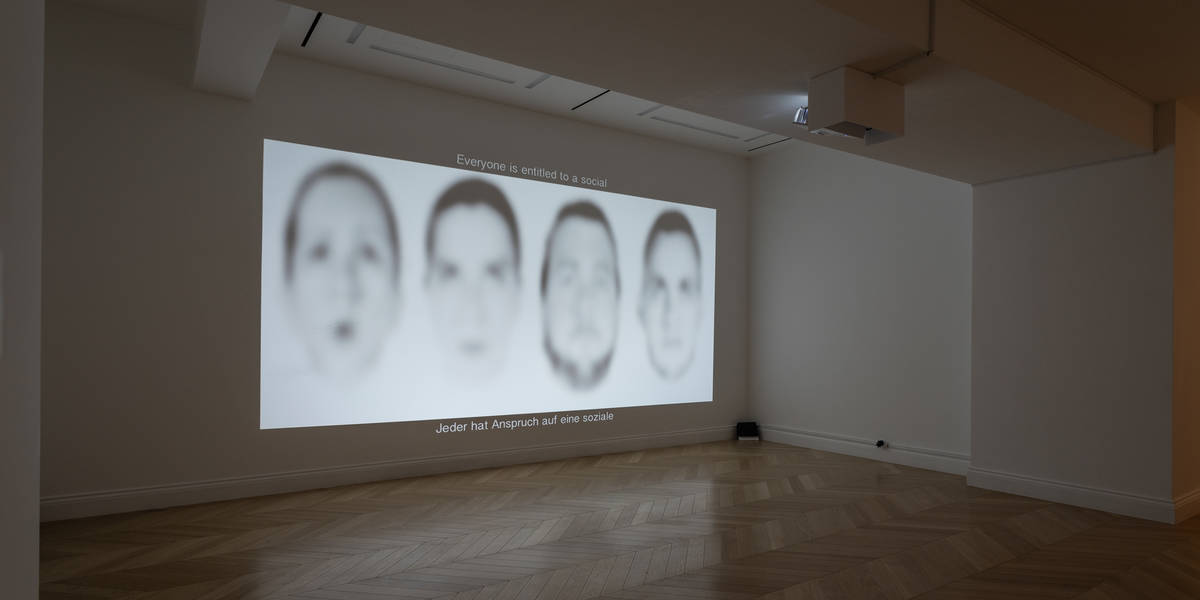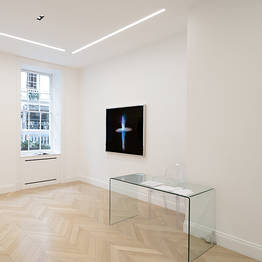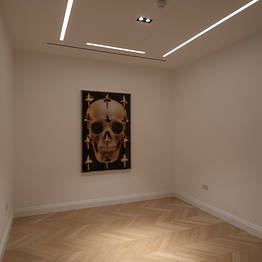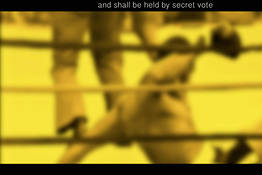Exhibition
Umberto Ciceri: HUMAN Fights Rights Lights
10 December 2018 - 31 January 2019
“HUMAN Fights Rights Lights” an exhibition by Umberto Ciceri
Private view: Tuesday 11 December 2018, 6.00 pm - 9pm
Exhibition: 10 December - 31 January 2018
/19
Senesi Contemporanea
25 Dover Street W1S 4LX - Mayfair- London
“HUMAN fights rights lights” is the title of the video-trilogy, presented in preview at Senesi Contemporanea in London, in which the artist Umberto Ciceri stages " in the very day of its 70th anniversary " the full text of the “Universal Declaration of Human Rights”, signed on 10 December 1948 in Paris.
The “Universal Declaration of Human Rights” is one of the pillars of the history of civilization, where the fundamental rights of mankind are recognized, regardless of origin, belief, race, gender, language, social and cultural conditions; values and rights that must always be protected and whose spirit must be renewed every single day.
For this reason, Umberto Ciceri's work has a great impact: it aims at strengthening the 30 articles of the Declaration through a mythopoetic re-writing which resorts to allegories and a careful staging:
1) in the first act, Ciceri gathers a number of famous boxing knock-outs from the Fifties, especially Rocky Marciano's; he turns them into sparkling yellow images while a speaker, shouting with the same passion of the original one, follows the match by reciting the text of the articles, so that the excitement of the verbal text as a sports commentary coincides with the images of the final moments of the match and, in the apex of the reciting, it is not clear if the guardian of the rights is the losing or the winning part
2) in the second act, the construction is more daring and almost moving in its multisensorial beauty: the German version of the Declaration has been put to music on Bach's cantatas, keeping the counterpoint, and it is recited by four voices: soprano, contralto, tenor and basso, filmed by a camera and then blurred until they almost become ghosts
3) finally, the third act proposes Majja Michajlovna Plisetskaia's dance, the greatest ballerina ever, whose movements are tuned with the heartbeats which, in turn, translate the articles of the declaration, until they merge into a single sound, an almost celestial harmony of the universe
The exhibition “HUMAN fights rights lights”, curated by Angelo Crespi, also presents a number of kinetic and lenticular works, typical of Ciceri's artistic research. In the footsteps of the Op Art and Kinetic art avant-garde movements, but with a higher lyrical intensity, his lenticular works are characterized by a stylistic perfection, a formal strictness, but also by the ability to speak of the conditions of human beings, caught between Being and Becoming, between the sentiment of Eternity and the pain caused by the Time that passes.
Umberto Ciceri's research, an Italian artist who has been living and working in Barcelona, Spain, for many years, is marked by the different contents and the different modalities of aesthetic representation: the former has social purposes and uses audio installations, video-projections and performances; the latter, called hypertrait, is based on neuroaesthetic studies, a personal evolution of a kinetic technique that pushes the spectator to move before the work in a perceptual ceremony of time concurrence.
Bio
Born in Milan in 1961, Ciceri now lives and works in Barcelona and Bologna.
After 25 years dedicated to exploring the visual arts, the biology of sight, the neurophysiology of perception, and the chemistry of colour, pattern, and texture, Umberto Ciceri began creating his own artworks in 2007. Ciceri has participated in an number of Italian exhibitions, including Art Verona (2008, 2009, 2010, 2011, 2012), Miart (2009, 2010), and Artefiera Off Bologna (2009, 2010, 2011, 2012). His works were also shown at the 54th International Art Exhibition of the Venice Biennale in the Italian Pavilion curated by Vittorio Sgarbi. In addition, Ciceri has held a series of solo exhibitions in Europe:Spin Life (Cologne, Germany; 2010), and Inevitable abstractions (Positano, Italy; 2011). His Hypertrait artworks are built around the concept of perpetual motion like celestial mechanics, where both movement and immobility are an illusion. The optical and kinetic process of these works creates a translatory motion: the movement of the observer causes the image to move, and the movement of the image causes, in turn, the observer to move. There results an immersive motion within the depths of the perception. Each Hypertrait experience is unique and dependent upon the precise relationship between the work and the observer, including the of number of revolutions and cycle reiterations. This relationship will always be as unique as each observer's ability to break down and reconstruct the material presented in the work. Ciceri's trademark blurring technique is created by painstakingly breaking down the focus of each image and then reconstructing it in its elementary colour patterns, a process requiring experience and skill. Umberto Ciceri uses lenses as a kinetic medium, "moving" in antithesis to immobility acquires an existential meaning: regeneration against stasis. The works enhance the wonder and the hidden drama behind every provisional state of harmony, each collective state of grace.
For all press inquiries, contact
Ginevra Russo/ Carla Schöffel +44 2074936179 info@senesicontemporanea.co.uk









